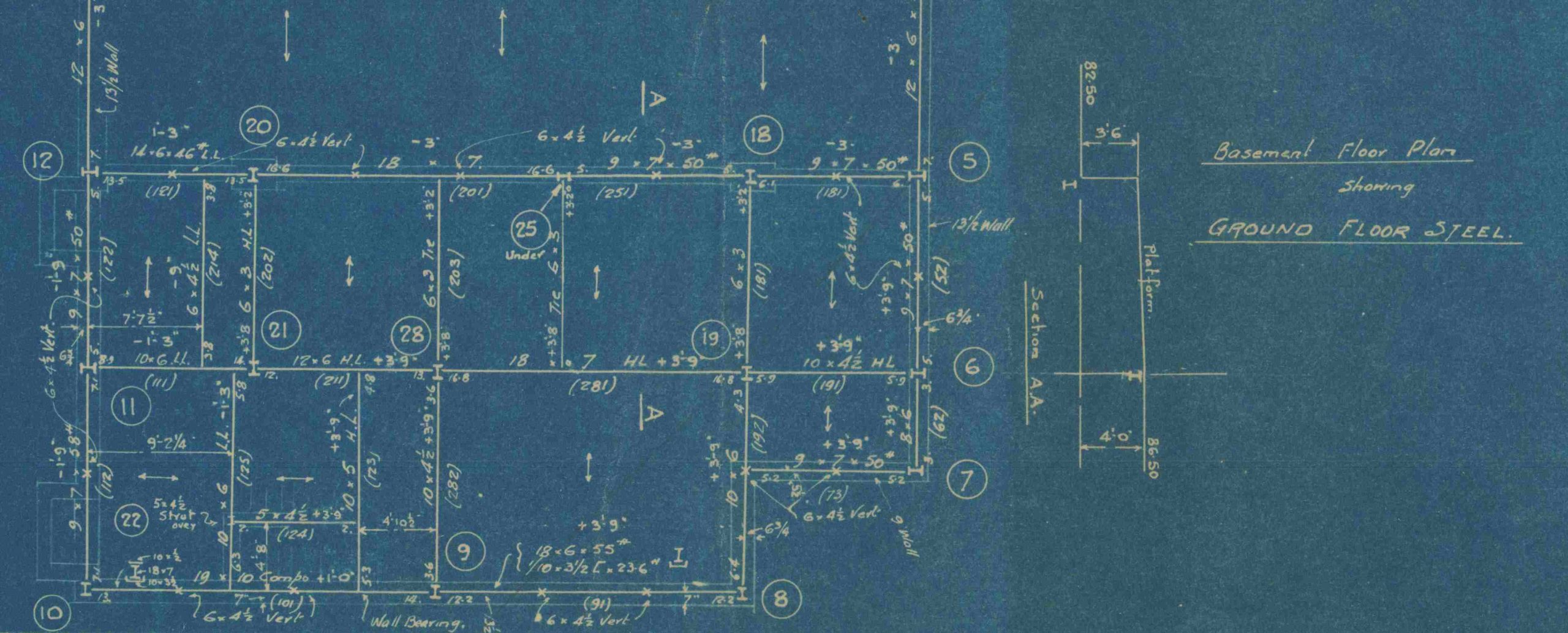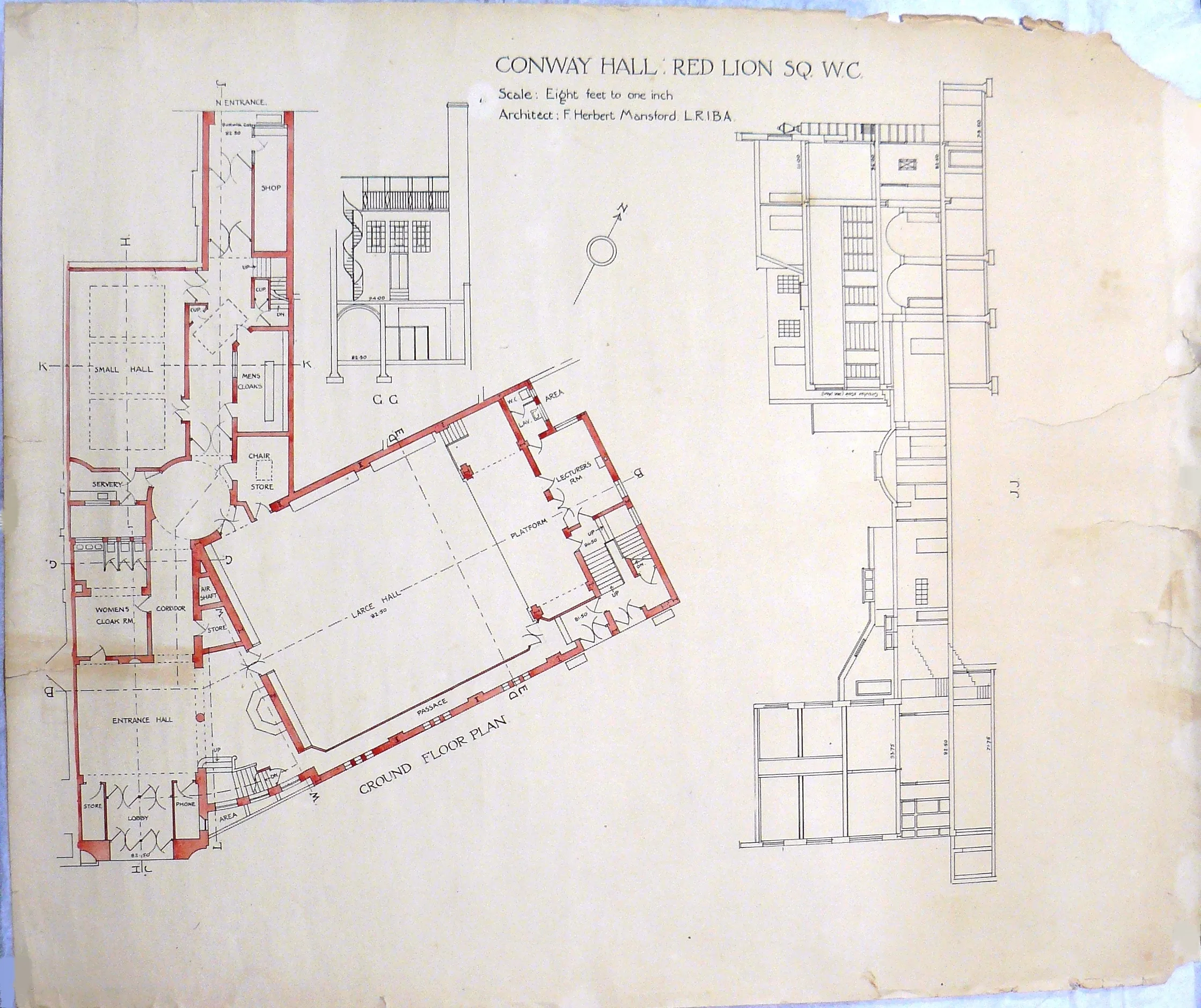Estimated reading time: 2 minutes

Basement blueprint
A profound design process eventually makes the patron, the architect, and every occasional visitor in the building a slightly better human being.
– Juhani Pallasmaa
Welcome to the June update for the Architecture and Place digitisation project underway at the Humanist Library and Archives at Conway Hall. We have included a summary of the progress to March as well as a summary of progress to this current month.
By March we had:
- selected items to digitise according to the selection criteria document we developed;
- sent several fragile items off for conservation so that they are stabilised and better able to withstand the handling required for scanning;
- solicited quotes from scanning vendors;
- identified the majority of controlled vocabularies we would be using for our metadata;
- started scoping digitisation platforms on which to build our digital collections;
- begun planning for the project launch;
- begun investigating learning opportunities that we could develop incorporating the digitised material;
- begun research so that we could begin writing contextual material for the items and the project; and,
- investigated the option to include some oral history in the project.
By June we have:
- selected a scanning vendor and written condition reports for every item that will be scanned externally;
- defined our image scanning technical specifications and naming conventions;
- scanned a limited number of items (photographs) in-house to the outlined specifications;
- completed evaluation of platforms against our requirements and selected Omeka as our platform;
- conducted an analysis of metadata schema and are currently waiting on discussion with a potential Omeka developer as to the appropriateness of the selected schema to the selected platform;
- refined our ideas for the projects launch;
- started drafting contextual material;
- hired On the Record to conduct an oral history interview with Gordon Honey, a tenor and former performer at Conway Hall;
- begun investigating copyright situation of each of the items for digitisation and particularly those items that may require licencing under the Orphan Works Licensing Scheme; and,
- taken on a volunteer to assist with assessing the copyright situation of the items.

Ground floor plan
Apart from the nuts and bolts of developing the project we have gained a much greater understanding of the selected archival items which demonstrate the changes of thinking that the architect, F. Herbert Mansford, noted in his different iterations of plans for the Hall. It took several years for the Committee of the South Place Ethical Society to make a decision to sell the South Place Chapel and raise the funds to build Conway Hall and so Mansford had time to try out several ideas and gain feedback on the shape and function of the new building.
The leases, dating from 1685/6, also offered us, with our limited understanding of parchment documents, an opportunity to learn how these leases survived for so long, still legible and with signs of corrections made to the text through scraping of the parchment. Some of these fascinating documents include plans showing the outlines of buildings that existed on the land prior to the building of the Hall and/or lists of chattels for each room within the properties. In addition to the material nature of the leases their content reveal a long term connection of the properties to one particular family, the Stricklands, for almost a hundred years passed down through the family from generation to generation.
We look forward to sharing our future progress with you in the coming months.